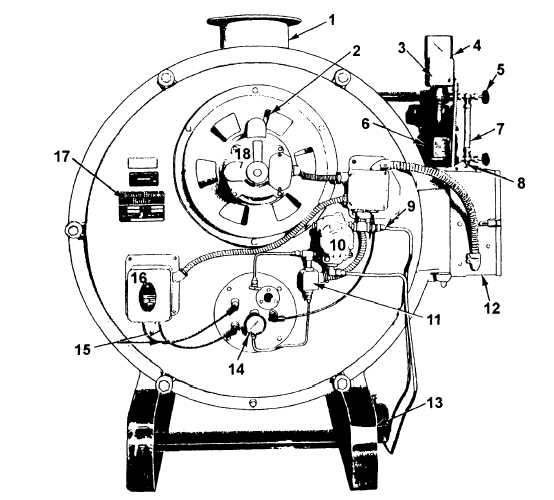boiler shell for inspection, cleaning, and repairs. On such occasions, always ensure that all valves are secured, locked, tagged, and that the person in charge knows you are going to enter the boiler. Additionally, always have a person located outside of the boiler standing by to aid you in case of an incident occurring that would require you to need assistance. The handholds are openings large enough to permit hand entry for cleaning, inspection, and repairs to tubes and headers. Figure 1-2 shows a horizontal fire-tube boiler used in low-pressure applications. Personnel in the Utilitiesman rating are assigned to operate and maintain this type of boiler more often than any other type of boiler.
Vertical-Tube Boiler
In some fire-tube boilers, the tubes run vertically, as opposed to the horizontal arrangement in the Scotch boiler. The VERTICAL-TUBE boiler sits in an upright position, as shown in figure 1-3. Therefore, the products of combustion (gases) make a single pass, traveling straight up through the tubes and out the stack. The vertical fire-tube boiler is similar to the horizontal fire-tube boiler in that it is a portable, self-contained unit requiring a minimum of floor space. Handholds are also provided for cleaning and repairing. Though self-supporting in its setting (no brickwork or foundation being necessary), it MUST be level. The vertical

Figure 1-2. - Horizontal fire-tube boiler used in low-pressure applications.
1. VENTS
2. AIR DAMPER
3. HIGH-LIMIT PRESSURE CONTROL
4. STEAM PRESSURE GAUGE
5. GAUGE GLASS SHUTOFF COCK
6. LOW-WATER CONTROL
7. WATER LEVEL GAUGE
8. BURNER SWlTCH
9. PRIMING TEE
10. OIL UNIT, TWO STAGE
11. SOLENOID OIL VALVE (Maintenance)
12. SERVICE CONNECTION BOX
13. FUEL OIL SUPPLY CONNECTION
14. FUEL OIL PRESSURE GAUGE
15. IGNITION CABLE
16 IGNITION CABLE
17. NAMEPLATE
18. BLOWER MOTOR
Continue Reading